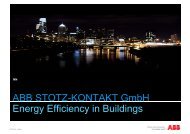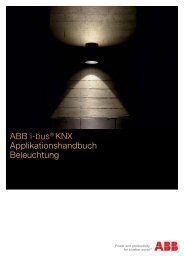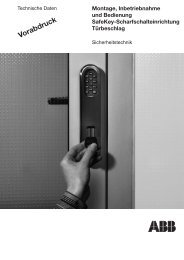Smart Home and Intelligent Building Control Energy Efficiency in ...
Smart Home and Intelligent Building Control Energy Efficiency in ...
Smart Home and Intelligent Building Control Energy Efficiency in ...
Create successful ePaper yourself
Turn your PDF publications into a flip-book with our unique Google optimized e-Paper software.
Optimisation example 1<br />
Light<strong>in</strong>g control<br />
Measures are to be undertaken <strong>in</strong> an office build<strong>in</strong>g to<br />
reduce the energy consumption.<br />
In the first step, the light<strong>in</strong>g system is modernised.<br />
The conventional ballasts of the fluorescent lamps are<br />
replaced by electronic ballasts. Accord<strong>in</strong>gly, the electrical<br />
power consumption of the fluorescent lamps is reduced by<br />
about 30 %.<br />
In order to further optimise the energy consumption,<br />
an additional constant light<strong>in</strong>g control is <strong>in</strong>troduced.<br />
The <strong>in</strong>tention is to provide a constant light<strong>in</strong>g <strong>in</strong>tensity of<br />
500 Lux on the work<strong>in</strong>g surfaces. The brightness sensor<br />
measures the current light<strong>in</strong>g <strong>in</strong>tensity for this purpose. Us<strong>in</strong>g<br />
the current value <strong>and</strong> the difference to the required light<strong>in</strong>g<br />
<strong>in</strong>tensity, the light controller calculates a brightness sett<strong>in</strong>g<br />
for the dimm<strong>in</strong>g actuators. Between 28 % <strong>and</strong> 66 % of<br />
electrical energy used for the light<strong>in</strong>g can be saved with this<br />
control method – depend<strong>in</strong>g on the season, the weather <strong>and</strong><br />
the location of the build<strong>in</strong>g (see ABB field study on pages 10<br />
<strong>and</strong> 11).<br />
14 2CDC 500 060 M0201<br />
F<strong>in</strong>ally, it is possible to detect the occupancy of the room<br />
us<strong>in</strong>g a presence detector <strong>and</strong> to implement an occupancy<br />
dependent light<strong>in</strong>g control system. If the room is not<br />
occupied, the light<strong>in</strong>g can be switched off automatically<br />
if someone has neglected to switch it off manually.<br />
The automatic presence-dependent control can yield a further<br />
13 % of sav<strong>in</strong>gs.


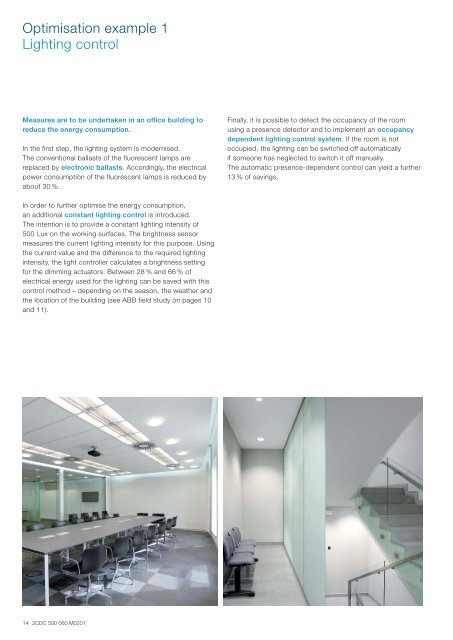


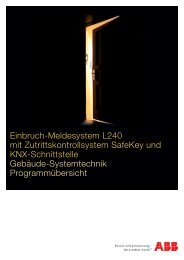

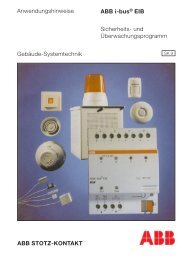
![The Right Decision [Solutions for Hotels] (.PDF)](https://img.yumpu.com/9654011/1/184x260/the-right-decision-solutions-for-hotels-pdf.jpg?quality=85)

